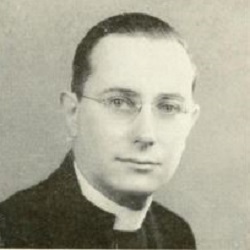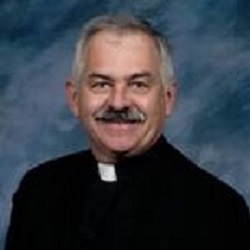Trinity Episcopal Church is one of the oldest churches in Woodbridge Township and one of the earliest to be established in New Jersey.
The church’s roots go back to 1698, when the Church of England sent missionary Edward Portlock into Perth Amboy. Portlock held services in Woodbridge shortly after his arrival. Another Anglican missionary, George Keith, followed in 1702-1703. Their early visits are noted in historic markers at the church’s entrance.
Members of the congregation also attended the First Church of Woodbridge, an independent meeting house constructed in 1675, six years after the township was founded. The church was in Kirk Green, a section of town that was set aside for religious buildings.
The First Church was non-denominational until 1710, when it became a Presbyterian church. The affiliation led people who wished to maintain other denominational ties to leave. Anglicans conducted services at private homes, including one offered by Benjamin Dunham, the son of an early Woodbridge settler, Jonathan Dunham.
Benjamin Dun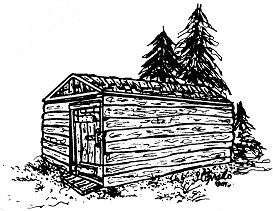 ham led an effort to build a permanent church. By 1713, the Governor of New Jersey granted permission to the Anglican community for a new building, located between the meeting house and Jonathan Dunham’s house. The church was a wood-framed, clapboard structure with unglazed windows and a dirt floor, as shown in this artist’s rendering.
ham led an effort to build a permanent church. By 1713, the Governor of New Jersey granted permission to the Anglican community for a new building, located between the meeting house and Jonathan Dunham’s house. The church was a wood-framed, clapboard structure with unglazed windows and a dirt floor, as shown in this artist’s rendering.
The building was unfinished when Benjamin Dunham died in 1715. While services were held there occasionally after his death, the structure fell into ruins and was abandoned by 1725.
In 1752, The Rev. Thomas Bradbury Chandler of Elizabethtown (now Elizabeth)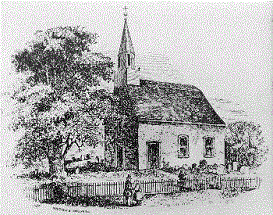 came to Woodbridge to hold services and to revitalize the congregation. He was sent by the Society for the Propagation of the Gospel in Foreign Parts in response to efforts by James Parker, founder of Parker Press, New Jersey’s first printing press. Parker was a lay reader and officiant.
came to Woodbridge to hold services and to revitalize the congregation. He was sent by the Society for the Propagation of the Gospel in Foreign Parts in response to efforts by James Parker, founder of Parker Press, New Jersey’s first printing press. Parker was a lay reader and officiant.
The society paid for the construction of the second church building, another wood-framed structure. The new building featured clapboard siding, glazed windows, wood flooring and a belfry. The work was completed in 1756, and the church is shown in this artist’s rendering.
A silver communion ch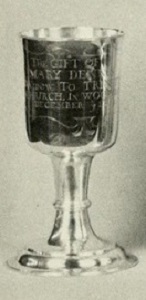 alice is the first documentary evidence for the church’s naming. The inscription reads: “The gift of Mary Dennis, Widow: to Trinity Church in Woodbridge, December ye 25th., 1760.” The chalice is still in the Church’s possession today.
alice is the first documentary evidence for the church’s naming. The inscription reads: “The gift of Mary Dennis, Widow: to Trinity Church in Woodbridge, December ye 25th., 1760.” The chalice is still in the Church’s possession today.
Trinity received a Royal Charter from a local representative of King George III on Dec. 6, 1769. Since then, the church has operated under its provisions, with one exception: the annual meeting is held on the fourth Sunday in January, rather than the Tuesday of Easter Week as stated in the document. The charter, shown below, was restored and framed in 2007 and is available for viewing in the church. For the text, click here.
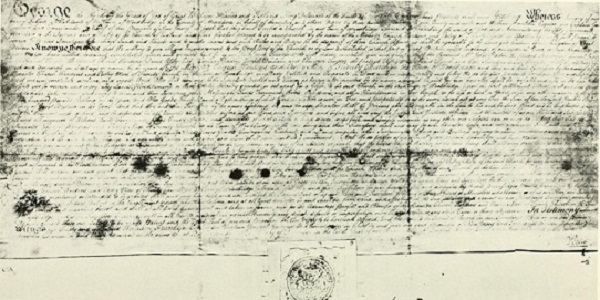
During the Revolutionary War, Trinity Church and all other Anglican churches in New Jersey were ordered closed. The denomination was then known as the Church of England, and many of the Parishioners were British subjects and Officials of the Crown. The church building was a barracks and the Rectory served as a fort when British soldiers occupied Woodbridge between December 1776 and June 1777.
Considerable evidence suggests that numerous members of Trinity Church took part in the fight for American independence. Yet the church’s historical association with England, along with a smallpox epidemic and other issues, caused the congregation’s size to dwindle after the war ended.
Damage done to the Church building in the war was left unrepaired until 1810, when Vestry member Daniel Terrill took it upon himself to raise the funds and supervise the work. After the repairs were completed, Trinity spent the next two decades without a Rector. Ministers assigned to the Diocese of New Jersey’s “vacant parishes” conducted services on occasion.
In 1858, the secon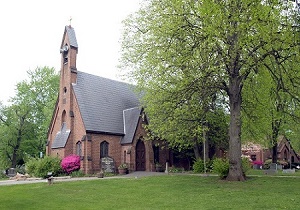 d church building burned to the ground when chimney embers from a wood stove ignited a fire. The Rector at the time, The Rev. Eugene Augustus Hoffman, raised money from the congregation to put up a third church building, which was larger and stronger than its predecessor. The brick structure was constructed in 1860 at a cost of $3,333.44 and consecrated on May 20, 1861. It is still in use today. For details about the building and grounds, click here.
d church building burned to the ground when chimney embers from a wood stove ignited a fire. The Rector at the time, The Rev. Eugene Augustus Hoffman, raised money from the congregation to put up a third church building, which was larger and stronger than its predecessor. The brick structure was constructed in 1860 at a cost of $3,333.44 and consecrated on May 20, 1861. It is still in use today. For details about the building and grounds, click here.
The Parish started mission congregations between 1863 and 1895. Among them were missions in the Sewaren and Fords sections of Woodbridge that eventually merged as St. John’s, Woodbridge, based in Sewaren. Another one, St. Mark’s, began in Carteret and lasted for decades before closing.
From 1899 through 1918, a period of decline followed as before. Senior Warden John H. Love refused to close the church in 1900 even though only one person attended some Morning Prayer services. Several years later, the Church could only afford a part-time Rector, who visited once a month.
The Rev. Edward Randolph Welles II, the Rector from 1931 to 1934, told the congregation’s story in “A History of Trinity Church, Woodbridge, New Jersey, From 1698 Through 1935.” One hundred copies of the book were printed. To read an electronic version of copy No. 84, click here.
(Father Welles revisited his years at Trinity in a 1975 autobiography, “The Happy Disciple.” For his account, click here.)
The Rev. William Harold Schmaus arrived in Woodbridge in 1942. Trinity initially shared his services with St. Peter’s, Perth Amboy and St. John’s, Fords. Father Schmaus was named Rector after 18 months, based on an improvement in the church’s finances. He retired in 1980 and was succeeded the next year by The Rev. Robert L. Counselman, who expanded Trinity’s ministries, served community organizations and arranged for church property to be listed on the national and New Jersey registers of historic places. Father Bob retired in 2014.
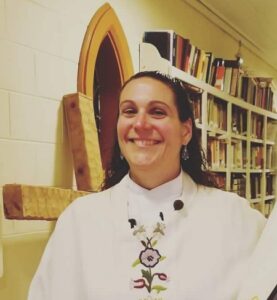
The Rev. Angela Cipolla was hired in 2015 as Trinity’s first female and LGBT priest. She served as Priest-in-Charge because financial setbacks left the congregation unable to name a new Rector.
Mother Angie initially worked part time. She became a full-time priest in 2017, when Trinity was reclassified to a mission from a parish in recognition of its financial status. She left in 2021.
After Mother Angie’s departure, Trinity affiliated with St. James, Edison, another of the oldest Episcopal churches in New Jersey. The decision allowed the two congregations to share clergy, as they have done several times in their history, and to collaborate on programs. The Rev. Fernando Paiva became the Priest-in-Charge at Trinity and St. James in January 2023, just after his ordination to the priesthood.
Trinity Church is alive with activities for congregants and the community. Along with providing religious education and sponsoring organizations, the church runs a Friday lunch program, Food Pantry, Diaper Bank and additional programs to help the less fortunate. The church also hosts community groups and supports the Episcopal Church’s work in the Diocese of New Jersey and worldwide.
As we celebrate more than three centuries of ministry to the Woodbridge area, we look forward to the future.
Links to Historical Documents
Historical Sketch, produced by the Diocese of New Jersey (1889)
Yearbook (1922)
250th Anniversary (1948)
275th Anniversary (1973)
125th Anniversary of the Consecration (1986)
Priests of Trinity Church
1. Edward Portlock, 1698-1699
2. George Keith, 1702-1703
3. John Talbot, M.A., 1704
4. John Sharpe, 1704
5. Edward Vaughan, 1709-1714
6. Thomas Halliday, 1717-1718
7. James William Skinner, 1722-1752
8. Thomas Bradbury Chandler, D.D., 1752-1763
9. Robert McKean, M.A., 1763- 1767
10. John Preston, 1767-1777
11. Abraham Beach, D.D., 1769, 1778-1784
12. Uzal Ogden, D.D., 1797-1804
13. Jasper David Jones, 1804-1809
14. James Chapman, 1809
15. John Croes, D.D., 1809
16. John C. Rudd, D.D., 1810
17. Daniel Higbee, 1812-1813
18. Lewis P. Bayard, 1813
19. George Y. Morehouse, 1815-1816
20. Samuel C. Stratton, 1817-1818
21. Francis H. Cuming, 1819
22. Clarkson Dunn, 1819-1822
23. John M. Ward. 1822
24. Robert B. Croes, 1823
25. John Croes Jr., 1824-1825
26. Charles Smith, 1825
27. Benjamin Holmes, 1825-1827
28. William Douglas, 1829-1838
29. Frederick Ogilby, 1838-1842
30. Hamble James Leacock, 1842-1843
31. James Chapman, 1843-1857
32. Henry X. Pierce, 1857
33. William P. Earle, 1857-1861
34. Eugene Augustus Hoffman, D.D., 1858-1862
35. Peter L. Jaques, 1862-1869
36. Robert C. Mcllwain, 1869-1871
37. J. A. Penniman, 1871-1872
38. T. Lewis Bannister, 1872-1875
39. Julian Edward Ingle, 1875-1879
40. Frank Hallam, 1879-1880
41. Howard E. Thompson, 1880-1884
42. Lewis H. Lighthipe, M.A., 1885-1895
43. Rudolph E. Brestell, D.D., 1896-1899
44. Scott B. Rathbun, 1899-1913
45. Henry Hale Gilford. Ph.D., 1914-1917
46. Reginald Harwood Thomas, 1918
47. Walter Herbert Stowe, D.D., 1919-1921
48. Edward Harold Vogt, 1921-1923
49. J. Benjamin Myers, L.L.B., 1923-1931
50. Edward Randolph Welles II, M.A., S.T.B., 1931-1934
51. Howard Frederick Klein, B.S., 1934-1942
52. William Harold Schmaus, M.A., S.T.B.. 1942-1980
53. Robert L. Counselman, B. Mus., M.Div, 1981-2014
54. Angela Cipolla, M.Div, 2015-2021
55. Fernando Paiva III, M.Div, 2023-

